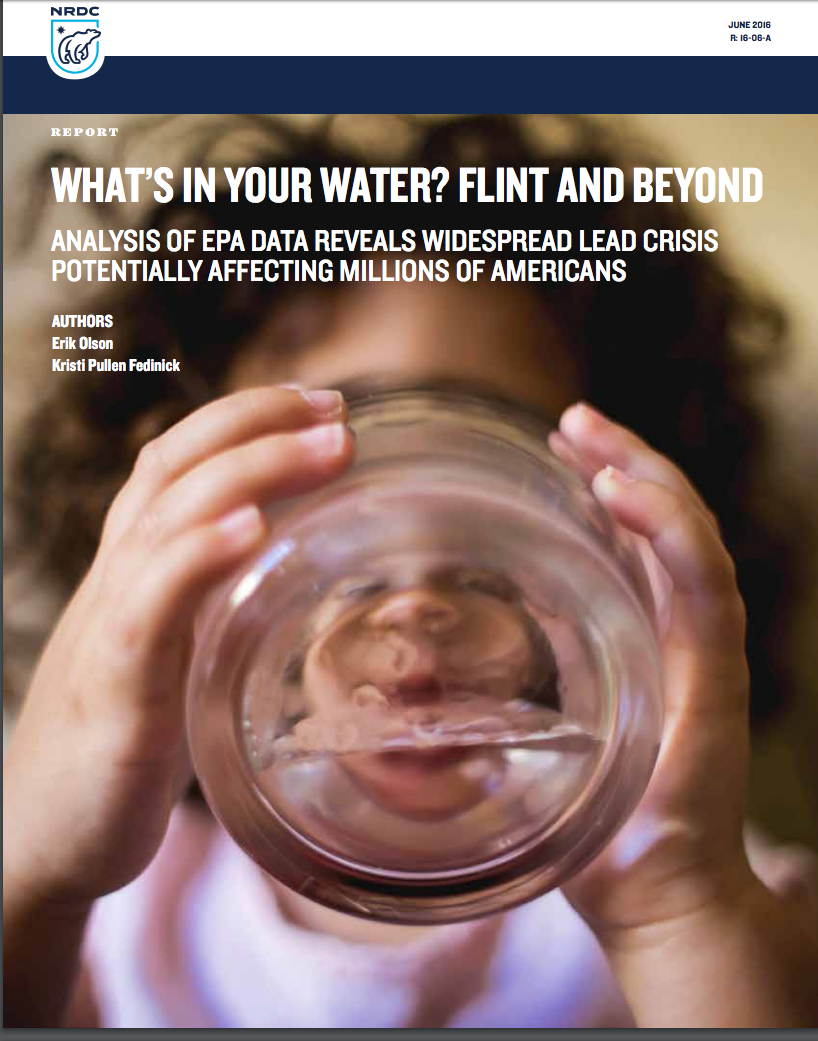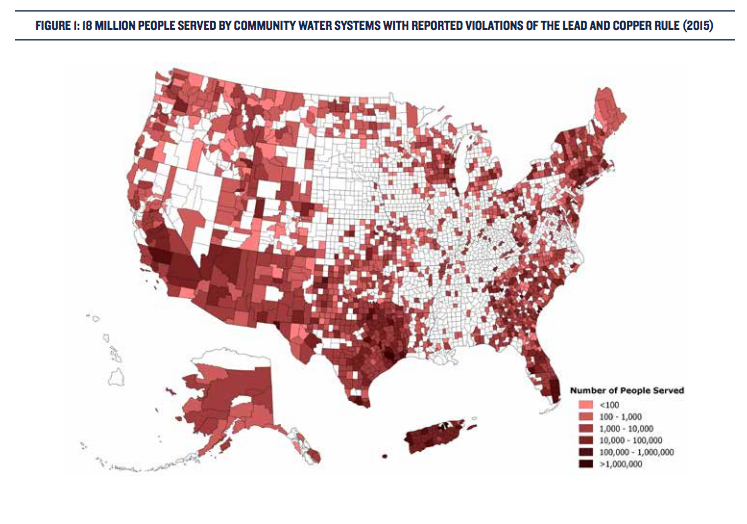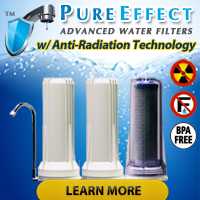
Art | Resources
Toxic Chemicals and Food Allergies/Sensitivities
I first observed a connection between food allergies and toxic exposures more than thirty years ago when I was working in the office of a doctor who was treating patients with multiple chemical sensitivities.
They would come in reacting to chemicals and foods and the doctor would send them off to the beach for a couple of weeks to give their bodies a break from the bombardment of toxic exposures. This was the treatment then, before we knew about saunas.
And it worked, too. Patients would come back from the beach happy and excited that they could eat any food they wanted without reaction.
And that’s how I made the connection between toxic chemicals overloading your body and food allergies.
This week two emails came in regarding toxic chemical exposure and food allergies.
One was the RODALE WELLNESS: 10 Crazy Things Pesticides Do to Your Body.
The other is WHOLE LIFE NUTRITION: How Chemicals Increase Food Allergies and Food Sensitivities. This well-documented post shows how toxic chemicals damage your immune system, leading to food allergies (and allergies and sensitivities of all sorts).
I was happy to see the scientific support for this, after observing it all those years ago.
The pieces of this toxic puzzle are coming together.
Harmful Chemicals from Natural Gas Operations Contaminate Bodies of Local Residents
 Fracking is the process of drilling down into the earth before a high-pressure water mixture is directed at the rock to release the gas inside. Water, sand and chemicals are injected into the rock at high pressure which allows the gas to flow out to the head of the well.
Fracking is the process of drilling down into the earth before a high-pressure water mixture is directed at the rock to release the gas inside. Water, sand and chemicals are injected into the rock at high pressure which allows the gas to flow out to the head of the well.
You may not have considered fracking operations as a source of toxic chemical exposure, but it’s something you should check on. 12.4 million people live in the threat radius. CHECK MAPS HERE to fnd out if your home or school is within a 1/2 mile of an active oil & gas well, and more about the pollutants that may be present from fracking. Thankfully, I’m not in a fracking zone here in Florida, but if you live in the midwest, northeast, or California, please check the map.
A new study has found that many of the toxic chemicals used at fracking sites may be present in higher concentration in the bodies of people in nearby communities.
A first-of-its-kind study combining air-monitoring methods with new biomonitoring techniques detected volatile organic compounds (VOCs) released from natural gas operations in the bodies of nearby residents at levels that were as much as 10 times that of the national averages.
The study focused on measuring ambient levels of a specific family of VOCs named BTEX chemicals — which include benzene, toluene, ethylbenzene, and xylenes — because these chemicals are known to be hazardous to human health even at low levels. Researchers then used new biomonitoring methods to detect these chemicals in 11 local residents who volunteered to participate in the study by wearing air quality monitors and providing blood and urine samples, and found evidence of eight hazardous chemicals emitted from Pavillion gas infrastructure in the urine of study participants.
EARTH ISLAND JOURNAL: High Levels of Toxins Found in Bodies of People Living Near Fracking Sites
EARTHJUSTICE: Unfractured: Joining Together ro Fight Fracking
Travel Cribs
Question from Jan
Hi Debra,
Have been researching safe Bassinetts/cosleepers. The best I have found are Nuna Sena and Lotus.
Do you have an opinion on these?
Debra’s Answer
Lotus website says they are “nontoxic” (and do extensive testing to ensure the bassinets are free of a long list of chemicals, and also that they are GREENGUARD GOLD Certified (they are the only travel crib in the world to receive this certification).
These are both good indicators that the product is nontoxic. However, I don’t see their materials listed, so I can’t verify for myself.
Nuna Sena is made with OEKO-TEX certified materials, but again, I don’t know what they are.
10 Ways Pesticides Harm Your Body
Here’s a great overview of 10 documented health effects of pesticides:
RODALE WELLNESS: 10 Crazy Things Pesticides Are Doing to Your Body
Of course the answer is to eat organic, but this post might make the connection between pesticide exposure in foods and a condition you or a loved one may have.
For example, did you know pesticides in food are liked to memory loss, diabetes, and obesity?
And there’s more…
My Personal Experience With “Second-Hand” Asbestos
Hi Debra,
I saw that you haven’t posted much about asbestos and I wanted to share my experience with this dangerous mineral. Exposure to asbestos is a truly silent killer and something that everyone should be aware of.
Many people think asbestos is a problem of the past, as laws were passed in the 1970’s that limited its use. While asbestos production took a sharp turn and began to decline around the time these laws were passed, it is still NOT banned in the US and Canada. It can still be found in older homes and buildings, schools, naval yards, automobiles, and even consumer products- leaving everyone at risk for exposure. Until asbestos is totally banned and eradicated, the potential for asbestos exposure will remain.
Exposure to asbestos is something that changed the path of my life forever. I am a mesothelioma survivor and advocate. I was initially exposed to asbestos through wearing my father’s work jacket. I wore his jacket to do outside chores so I wouldn’t get my clothes dirty. Little did I know that asbestos fibers were embedded into that jacket and would lead to a diagnosis of mesothelioma in 2005 when I was just 36 years old. My prognosis was not good; I was only given 15 months to live. Luckily, I was a candidate for a dangerous surgical procedure that involved the removal of my left lung. Recently, I am happy to say I celebrated my 10-year survival anniversary and I use my second lease on life to continue the exhausting fight for an international ban on asbestos.
Asbestos was originally thought of as a “miracle mineral”. It is extremely flame retardant, heat resistant and very cheap. Because of its cost-effectiveness and many benefits, it was produced in major quantities. However, people working with the product were found to have associated health problems as early as the 1900’s. The major health issue that asbestos causes is mesothelioma, a rare and aggressive cancer that doesn’t show symptoms until 20-40 years later. Mesothelioma is usually found in lining of the lungs, heart and stomach, and leaves those diagnosed with a prognosis of about 12-21 months to live.
For more information about this dangerous cancer caused by asbestos, head over to mesothelioma.com/mesothelioma.
Excessive Lead in Tap Water Across America, says NRDC
 In an extensive analysis of official EPA violation and enforcement records, NRDC mapped lead-related issues in drinking water systems across the United States. Our research illustrates the extraordinary geographic scope of America’s lead crisis. In 2015, 18 million people were served by water systems with lead violations
In an extensive analysis of official EPA violation and enforcement records, NRDC mapped lead-related issues in drinking water systems across the United States. Our research illustrates the extraordinary geographic scope of America’s lead crisis. In 2015, 18 million people were served by water systems with lead violations
NRDC:
What’s in Your Water? Flint and Beyond (article)
NRDC:
What’s in Your Water? Flint and Beyond (study)

 If you are drinking tap water, it’s likely that it contains chlorine or chloramines, fluoride, lead and other heavy metals, perhaps radiation, and unknown contaminants of various sorts.
If you are drinking tap water, it’s likely that it contains chlorine or chloramines, fluoride, lead and other heavy metals, perhaps radiation, and unknown contaminants of various sorts.
Your best protection is to get a water filter that removes a broad spectrum of known pollutants and unknown contaminants.
The water filter I use in my own home is made by Pure Effect. It’s state of the art filtration removes just about everything that might be in your water that you don’t want to put in your body.
Learn more about Pure Effect water filters here…
Skin Care That Fights Pollution?
Just a few days ago, The New York Times reported that toxic pollutants in the air can affect the skin’s aging process. A study done on data from subjects in Germany and China found an association between air pollution and brown spots on the skin.
In response, major beauty companies are now offering a new type of skin care product: “pollution protection.”
Read the article for all the technical details of how pollution is affecting your skin.
But skip all the expensive recommended beauty products listed. I haven’t checked all the labels, but I suspect they contain their own pollutants.
The article clearly states the best defense against air pollution is a regular routine of gentle cleansing and application of vitamin C serum or vitamin E to the skin on your face.
THE NEW YORK TIMES: What’s All the Fuss About Pollution-Fighting Skin Care?
JOURNAL OF INVESTIGATIVE DERMATOLOGY: Expanding Our Understanding of Human Skin Aging
BPA in Canned Food = BPA in the Body—and Cream of Mushroom Soup Leaches more BPA Than Peaches
We’ve heard this before—BPA is leaching from the interior linings of cans into canned food—but a new study shows that different types of food leach different amounts of BPA.
The study suggests that canned soups and pasta can expose consumers to higher concentrations of BPA than canned vegetables and fruit — and although those foods are tied to BPA concentrations, canned beverages, meat and fish are not.
Researchers found that people who consumed one canned food item in the past day had about 24% higher concentrations of BPA in their urine compared with those who had not consumed canned food. The consumption of two or more canned food items resulted in about 54% higher concentrations of BPA.
Once the researchers evaluated what types of canned foods were consumed, they found that eating canned soup resulted in a whopping 229% higher concentration of BPA compared with consuming no canned foods. Canned pasta resulted in 70% higher concentrations, and canned vegetables or fruit resulted in 41% higher concentrations.
In the past, researchers tested can linings for the presence of BPA. This study shows that BPA from can linings actually do elevate levels of BPA in the body.
CNN: Canned foods linked to BPA risk in new study
Cook without cans at Toxic Free Kitchen.
The Least Toxic Way to Waterproof Fabric
I happened to run across a how-to webpage that gave six methods for waterproofing fabric:
1. waterproof sprays
2. laundry detergent and alum
3. turpentine and soybean oil
4. iron-on vinyl
5. beeswax
6. linseed oil
Most of these are pretty toxic, but beeswax is actually a great solution.
I used to have a “waxed” raincoa oil clothe that was cotton coated with wax. This is apparently how they made raincoats before we had modern waterproof fabrics.
You may have heard of “oilcloth,” which is fabric treated with boiled linseed oil to make it waterproof. This was used for tablecloth. Today “oilcloth” is fabric with a layer of plastic.
Here are the instructions for waxing fabric to make it waterproof:
www.wikihow.com/Waterproof-Fabric
Kelly & Co.
 A “small and sturdy collection of thoughtfully designed handmade goods for the home. Materials- like linen, waxed canvas and reclaimed hardwoods are chosen for their sustainability, durability, and beauty. Enduring and durable, simple and sturdy, handy and handmade.” Oversized linen napkins in soft colors, linen blankets, linen coffee filters, wooden bangles, aprons, waxed canvas lunch bags and carryalls… “Kelly & Co. represents the work of two Kellys- Erin & Don- both living and working in the same tiny town in the hills of western Massachusetts. They are niece & uncle, and work with fabric & wood, respectively…Both have been at their chosen crafts for many years- so long that it feels perhaps their crafts chose them. Each will wax poetic about their materials if given the opportunity, and family dinners may find them appreciating the tiny luxuries of working where they live..”
A “small and sturdy collection of thoughtfully designed handmade goods for the home. Materials- like linen, waxed canvas and reclaimed hardwoods are chosen for their sustainability, durability, and beauty. Enduring and durable, simple and sturdy, handy and handmade.” Oversized linen napkins in soft colors, linen blankets, linen coffee filters, wooden bangles, aprons, waxed canvas lunch bags and carryalls… “Kelly & Co. represents the work of two Kellys- Erin & Don- both living and working in the same tiny town in the hills of western Massachusetts. They are niece & uncle, and work with fabric & wood, respectively…Both have been at their chosen crafts for many years- so long that it feels perhaps their crafts chose them. Each will wax poetic about their materials if given the opportunity, and family dinners may find them appreciating the tiny luxuries of working where they live..”






